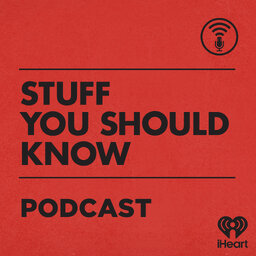How Uranium Mining Works
Mining uranium is dangerous work. Not only does it involve mining, which is dangerous itself, uranium is also found alongside some very radioactive stuff. Learn the ins and outs of this thrilling endeavor in this episode of SYSK.
Learn more about your ad-choices at https://www.iheartpodcastnetwork.com
 Stuff You Should Know
Stuff You Should Know


